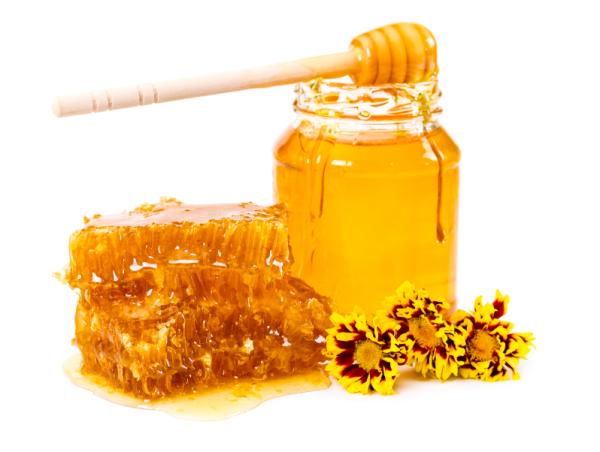
Whether in a hurry, excited about something delicious or simply not paying attention, it is common for food to get stuck in our throat because we haven't chewed properly. With hard, crunchy or large pieces of food, this is even more likely. While the majority of cases will find that food stuck in the throat causes little problem and any blockage can be removed quickly, there are possible instances where a blockage of food can lead to infection. If there is a severe blockage, you will know quickly enough that something needs to be done as you will start to choke and find breathing difficult. This oneHOWTO article shows you how to remove food stuck in throat if it is only a minor obstruction, but will also flag other possible concerns.
1. Try drinking some water
Though there are many reasons why you may get food stuck in your throat, you should know that most foods dissolve over time. So, if the piece is not causing too much trouble, let it dissolve naturally with the saliva in the throat. This is the case when you have food stuck in the throat but can breathe. If your airways are clear, then you can still breathe and asphyxiation is unlikely. The food is likely sitting in the back of your throat. Glutenous or sticky foods might lodge more easily than others.
If letting it pass naturally doesn't work, the first thing to try is drinking some cold water. This can help flush the sides and encourage the flow of food down the throat. If cold water doesn't work, warm water or tea might help remove the blockage. Don't use anything too hot, however, as it may burn and cause swelling. This can be dangerous and, at the very least, counterproductive.
Laying down flat on your back can help. If you do this and try to swallow some water at the same time, gravity can help dislodge the stuck food. You may have to repeat a few times to be successful.
Try gargling
If drinking water won't remove the food stuck in your throat, you can try gargling. This is when you hold the water in the back of your throat and the force air up through the throat and out of your mouth. It causes a bubbling sensation which is what we know as gargling. If you want to make it more effective you can:
- Add salt: salt is safe and clean, but works to break down other substances. Stir a teaspoon into a cup of water and let it dissolve. Take some into your mouth, swish it about and then gargle. You won't need the whole cup for one gargle, but you can use it to repeat the process. Be careful not to swallow as salt water can induce vomiting.
- Add hydrogren peroxide: while hydrogen peroxide is very nasty in its undiluted form, in solution form it can be very helpful in breaking down food stuck in the throat. Use a 3% hydrogen peroxide solution by mixing it with equal parts warm water (a capful of each should suffice). Gargle and spit out. Again, swallowing is inadvisable and unpleasant.
- Add apple cider vinegar: if you don't have hydrogen peroxide, you can create a similar solution by adding a tablespoon of apple cider vinegar to about a cup of warm water and gargle with this. You can make the solution stronger, but vinegar can erode tooth enamel so rinse very well and brush your teeth after words.
- Use mouthwash: using mouthwash may help break down the food while gargling and won't damage your teeth.
Try eating something soft
Another method to remove food stuck in the throat is to try to eat something soft. This may be as simple as continuing to eat what you were eating before as the next food coming down the throat can help dislodge the stuck food. However, there are circumstances where this could make it worse, especially if the food stuck in your throat is already difficult to swallow.
Choosing something like bread or some sticky rice will serve you better if you want to remove the stuck food as it will stick to it. If using bread, either dip it in some water or let it soak in your own saliva before swallowing. The sticky rice should work on it its own.
It might be helpful to add a little honey to the food stuck in your throat as it will help it to stick. If the food is stuck hard in your throat, you may find that you'll have to spit the food out rather than have it go down towards the stomach. Be very careful not to choke if trying to remove stuck food in the throat this way. It is best to have someone else present if possible so that that can provide assistance if something goes wrong.

Try a vocal cough
Another trick you can try is to cough dislodge the food with a controlled vocal cough. This will constrict the throat and then expel any particles that are stuck. To do this you can take in a deep breath of air and then try to contract your throat muscles. As you contract these muscles, use your abdominal muscles to try to push air up your throat again. The air should push against the food stuck in your throat and make you cough it out. Do not do this too often, even if you have food still stuck in your throat, as it can lead to choking and be dangerous.

Try a raw egg
Another technique to remove food stuck in the throat involves something many people find distasteful. This is to swallow a raw egg. The emulsified egg can help the obstruction in your throat move and bring the food with it as it enters the stomach. While raw eggs in themselves are not actually bad for you, there is a slight risk of bacterial contamination which can lead to problems such as salmonella[1].
If you have a lowered immunity for whatever reason, you may not want to remove food stuck in the throat with a raw egg. If you do decide to do it, the risk is actually very low (some studies saying as low as 1 in 30,000 eggs may be contaminated). To reduce this risk, wash the outside of the shell before you crack the egg as this can be where the bacteria comes from rather than inside.
Try the Heimlich manoeuvre
If you think the obstruction is very serious, you may need a more drastic solution. If somebody else is in the room, then the Heimlich manoeuvre might be able to dislodge the food stuck in your throat. This is a method whereby you put pressure on the person's abdomen to push air back through the system. This way the food stuck in your throat will be forced out along with the air. This is similar to making yourself cough, but only when this doesn't provide enough pressure.
If you are really stuck and there is no one else around, you may be able to make yourself gag and remove the food stuck in your throat this way. To do this, extend your forefinger and middle finger and push down the back of your throat. This will enable your gag reflex and you may be able to pass the stuck food this way.
However, these are for emergency situations and you should be confidant in first aid if you attempt to use them. If you have you need to dislodge from your esophagus for a long time, it is best to see a doctor and be careful not to do anything to yourself which could cause further harm or discomfort.

Is there food stuck in your throat?
If all of the above methods on how to remove food stuck in the throat do not work, it is important to know you need to go see a doctor. The food or object may be lodged so far in that an endoscopy or even surgery might be needed to remove it. If you can still breathe with the object stuck in your throat, then there is less chances of asphyxiation. However, the object can move, so it is very important to remain calm and not panic.
You may have something which seems stuck in your throat, but it might not be a foreign body. Sometimes we have the sensation there is something in our esophagus or at the back of the throat, but it is has another explanation. If you have noticed other symptoms, it could be an underlying problem such as:
- Gastroesophageal reflux disease (GERD): this usually a chronic condition which involves stomach acid rising to the back of the throat. GERD can lead to damage to the tissue and inflammation, giving the sensation of something stuck in the throat[2].
- Dysphagia: this is the general term for a difficulty in swallowing and usually affects either the top or the shaft of the esophagus. Can lead to serious repercussions including dehydration and inability to eat. Dysphagia can give the feeling of something stuck in the throat, but it needs a medical diagnosis.
- Tumors: whether it is cancerous[3] or benign, a tumor can make you feel like you have food stuck in your throat even if you have not eaten. It will usually happen gradually, but depends on how quickly it grows.
- Diverticulum: these are small sacs, either hollow or fluid filled. They can appear on the esophagus and give the sensation of having food stuck in your throat.
- Lymph nodes: swelling of lymph nodes in the throat can give you the feeling of there being something in your throat there shouldn't.
- Tonsillitis: when the tonsils are inflamed they can feel like there is something stuck in your throat. You can probably tell by seeing the swollen tonsils in the mirror.
- Globus sensation: sometimes known as Globus pharyngeus, globus hystericus or simply globus, the globus sensation is the feeling you have something stuck in your throat. This sensation is often psychosomatic or may be the misinterpretation of another sensation such as inflammation. Many believe one symptom of GERD may be the globus sensation[4].
If you think there may be some issue other than a food blockage, you should go to the doctor for examination. They can rule out an underlying problem as well as remove the blockage if this is the case. We also have some further information on why you feel like you have food stuck in your throat if you want to know more.
This article is merely informative, oneHOWTO does not have the authority to prescribe any medical treatments or create a diagnosis. We invite you to visit your doctor if you have any type of condition or pain.
If you want to read similar articles to How to Remove Food Stuck in the Throat, we recommend you visit our Family health category.
1 https://www.omicsonline.org/open-access/salmonella-in-shell-eggs-mechanisms-prevention-and-detection-2155-9600-1000455.php?aid=66894
2 https://www.ncbi.nlm.nih.gov/pmc/articles/PMC3360444/
3 https://www.ncbi.nlm.nih.gov/pubmed/19700249
4 https://bmcgastroenterol.biomedcentral.com/articles/10.1186/s12876-017-0666-x